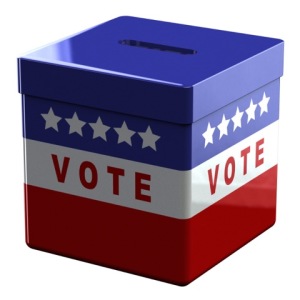Hillary Clinton leads Donald Trump by three percentage points among likely voters nationally, the latest sign that her campaign’s painstaking focus on women, Latinos and blacks could help propel her to the White House.
The final Bloomberg Politics national poll before Tuesday’s election has Clinton ahead of Trump, 44 percent to 41 percent, when third-party candidates are included. In a two-way contest, she’s also up by three points.
Interviews were conducted Friday evening through Sunday afternoon, before FBI Director James Comey announced his decision that Clinton shouldn’t face criminal charges related to use of a personal e-mail server as secretary of state.
Comey’s initial letter informing Congress—11 days before the election—that the FBI was conducting a review of newly discovered e-mails breathed new life into Trump’s candidacy at a time most polls showed Clinton with a bigger lead. The FBI’s decision Sunday brings a positive burst of news for Clinton in the campaign’s critical home stretch.
The tightness of the race highlights the importance of turnout for both sides, as the final wave of campaign events, door-knocking, e-mailing, and phone-calling comes to a close.
More than a third of likely voters, 37 percent, say they’ve already voted and Clinton is leading Trump with that group, 46 percent to 38 percent.
The results offer a national snapshot of the race, but they fail to reflect the reality of the state-by-state pursuit of the 270 electoral votes needed to win the White House. Trump has strong support in the South, the survey shows, while Clinton has the advantage in the Northeast, Midwest and West.
“The poll reflects a tight race, for sure, but what is so striking is the sour mood of the electorate,” said pollster J. Ann Selzer, who oversaw the survey. “Looking forward, they see scandals aplenty and sizable segments of each side vow to keep fighting even after all the votes are counted.”
The poll of 799 likely voters has a margin of error of plus or minus 3.5 percentage points, higher among subgroups, and was conducted by Iowa-based Selzer & Co.
In the four-way race, Gary Johnson, the Libertarian nominee, is backed by four percent, while the Green Party’s Jill Stein gets two percent.
Clinton has more demographic strongholds than Trump, when the two are compared alone. She’s leading among women (+15 percentage points), those under age 35 (+15 percentage points), non-whites (+37 percentage points), Hispanics (+25 percentage points), those with college degrees (+15 percentage points), and suburban women (+22 percentage points).
Trump has some of his strongest support among those without college degrees (+8 percentage points), white men (+25 percentage points), rural dwellers (+30 percentage points), and those who are married (+9 percentage points).
Among Republicans and those who lean that way, Trump has the support of 85 percent, while Clinton is backed by 86 percent of Democrats and those who lean that way.
Trump isn’t doing as well as Republicans overall. Voters are slightly more positive on Republicans than Democrats for their preference for congressional representation, with 48 percent saying they prefer or are leaning toward the Republican U.S. House candidate in their district, while 45 percent pick the Democrat or lean that way.
